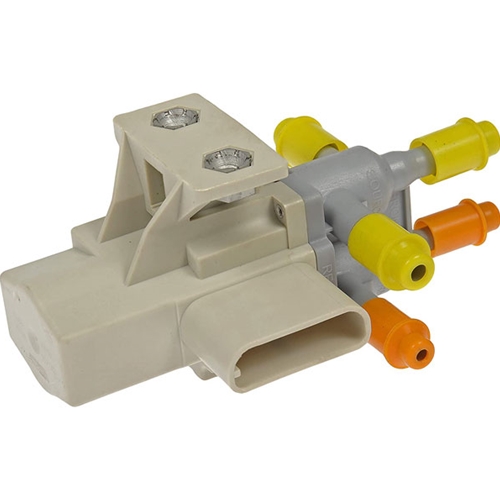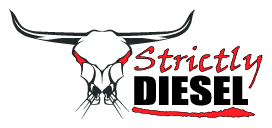 94-97 OBS Ford Powerstroke owners have the added potential complication of a fuel tank selector valve in the suction side of their fuel system. This valve switches the supply and return connections between the 2 different fuel tanks in the truck. Regardless of whether the truck is still running the OEM mechanical fuel pump in the valley, or has been updated to a more modern electric fuel pump system, this valve can cause some drivability or performance issues. The selector valve itself isn't rebuildable or repairable, so this article is really more of a quick explanation of how the valve works and how to determine if the valve is causing you a problem.
94-97 OBS Ford Powerstroke owners have the added potential complication of a fuel tank selector valve in the suction side of their fuel system. This valve switches the supply and return connections between the 2 different fuel tanks in the truck. Regardless of whether the truck is still running the OEM mechanical fuel pump in the valley, or has been updated to a more modern electric fuel pump system, this valve can cause some drivability or performance issues. The selector valve itself isn't rebuildable or repairable, so this article is really more of a quick explanation of how the valve works and how to determine if the valve is causing you a problem.I DON'T CARE HOW IT WORKS, JUST TELL ME IF IT'S BROKEN
For those simply trying to diagnose a problem, there are some things to consider. First, if the issue exists with the selector switch in just one position, either Front or Rear, the problem is going to be somewhere between that specific tank and the selector valve. Generally speaking, if you fill the affected tank and the problem goes away until the level falls to a specific point, the problem is IN the fuel tank (broken pickup screen, cracked pickup tube, etc). If it makes no difference what the fuel level in the tank is, the issue is likely between the top of the tank and the selector valve. If you have inspected the supply line from the tank to the selector valve and it is not damaged, kinked or obstructed in any way, there is a good possibility that the valve itself is the problem. In the case of a problem that only exists with one tank, and where no issue can be found with the tank or the fuel lines, per the above, you generally won't go wrong by just replacing the selector valve.
If you want to be sure that you don't have problems from the selector valve back to the tank(s), the easiest method is to use a "Bucket Test". See this article for information on performing "Bucket Tests". The goal is to bypass the fuel tank(s) and tank to selector valve supply lines to see if the problem goes away. One at a time, disconnect the larger SUPPLY line from the inlet of the selector valve (either front or rear port) and connect a temporary hose from the selector valve to an alternate container of fuel. If the system operates normally when running from a "Bucket", but not when running from the fuel tank, the problem is in the tank or supply lines.
If the system still does not operate normally, you will want to bypass the selector valve next. In this case, find a location in the supply line after the selector valve to disconnect and reroute to an alternate container of fuel. With the pump drawing from the alternate container, if the system operates normally, the selector valve is the problem and needs to be replaced.
WHY DOES THIS THING FAIL?
The fuel tank selector valve can fail in a number of ways. The mechanism uses an electric motor with a threaded shaft to move the valve plungers from one position to the other. When the switch is flipped to change tanks, the electric motor is engaged, moving both plungers (supply and return) and a pair of internal electrical contacts (one for the electric motor, one for the fuel tank sending unit signal). When the electrical contact moves far enough, it breaks the electrical connection, stopping the motor. When the switch is flipped to the other tank, the polarity is reversed and the electrical motor turns the other direction, moving the plungers and contact back the other way. Again, when the electrical contact reaches the end, the electric motor stops. Because the mechanism moves along a threaded shaft, there is no default position, the plungers can be stopped anywhere in their range of travel. Anything that stops the electric motor from turning the threaded shaft stops the valve from changing position (failed electric motor, electrical connection problem, etc). If the threaded shaft breaks or strips, the valve doesn't move. Because the motor is small and weak, if something stops the plungers from moving (debris in the valve), it can prevent the valve from fully switching to one or both tanks.
In a nutshell, the plungers can end up stuck in ANY position along their range of travel, and that range is long enough to allow for partial flow from one tank with no flow from the other, or even no flow from either tank.

Author: Dennis Schroeder - Co-Owner of Strictly Diesel
Dennis has been Designing, Building and Supporting Aftermarket Fuel Systems for 7.3L and 6.0L Powerstrokes since 2001.


